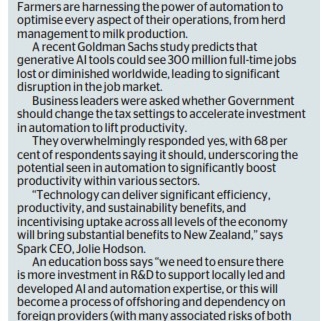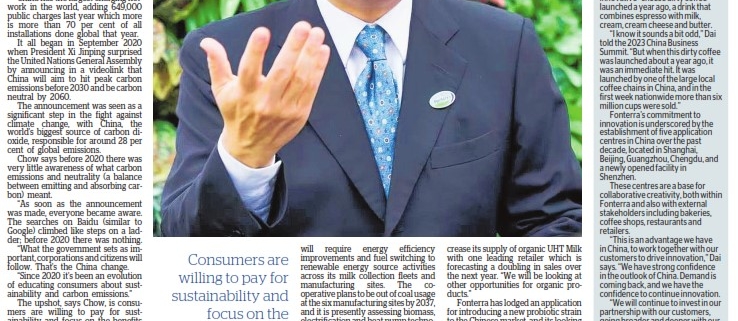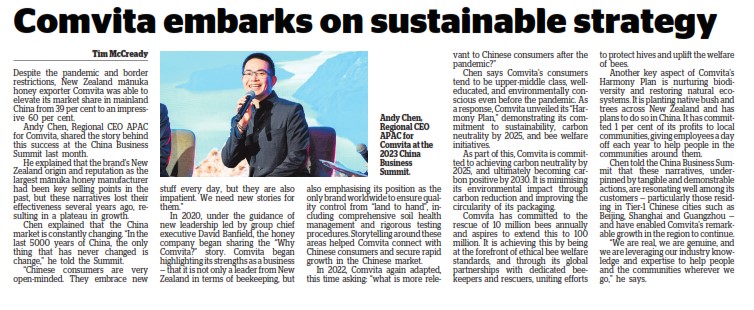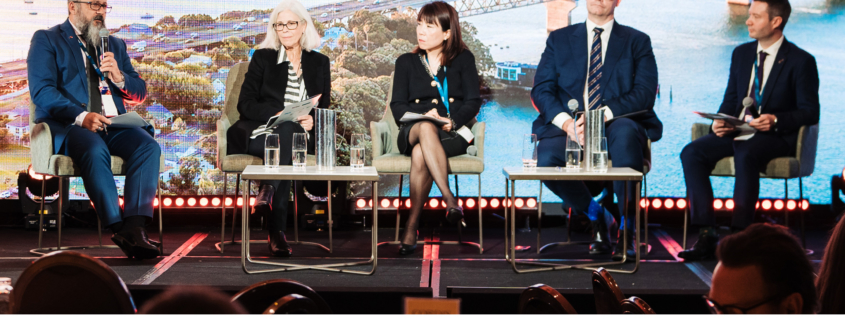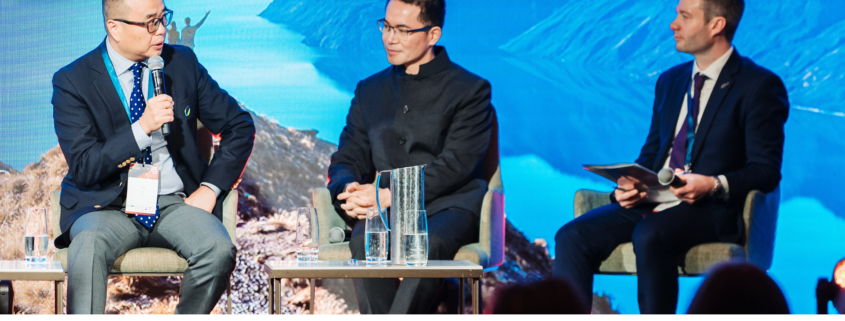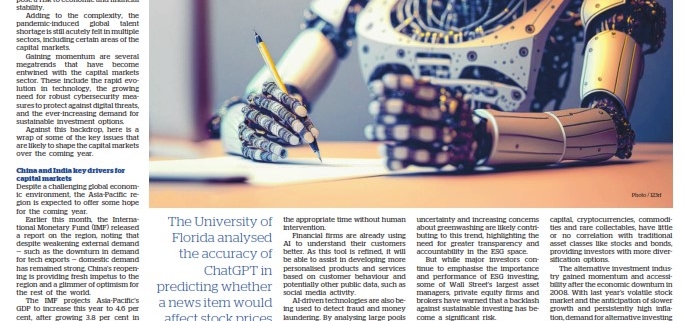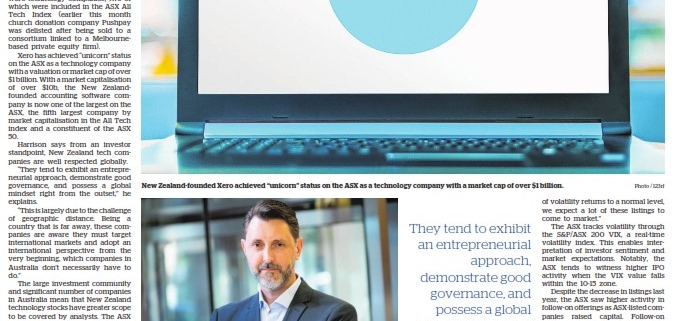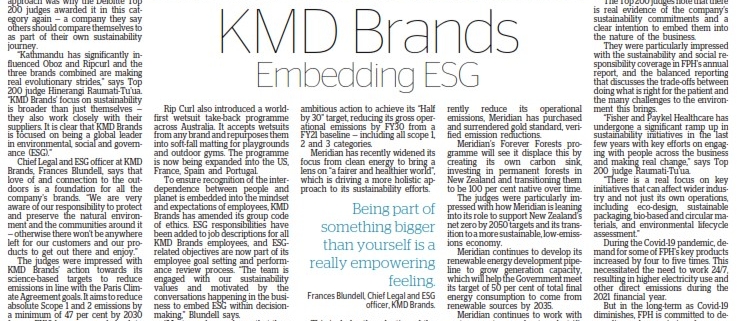Deloitte Top 200: Sustainable Business Leadership: KMD Brands
For the second year in a row, KMD Brands has been acknowledged for its relentless focus on sustainability, taking out the Deloitte Top 200 Sustainable Business Leadership award.
The global outdoor, lifestyle and sports company, formally known as Kathmandu Holdings, is the parent company to three iconic brands — Kathmandu, Oboz and Rip Curl.
Kathmandu gained B-Corp certification in 2019, becoming the largest Australasian retailer to be certified through the stringent process which recognises the highest standards of environmental and social performance. The company continues to push for sustainable practices with both surfwear brand Rip Curl and hiking footwear brand Oboz also working toward gaining B-Corp certification in FY23.
KMD Brands’ consistency and leadership in putting sustainability at the heart of its strategy, along with its strong targets and transparent approach was why the Deloitte Top 200 judges awarded it in this category again — a company they say others should compare themselves to as part of their own sustainability journey.
“Kathmandu has significantly influenced Oboz and Ripcurl and the three brands combined are making real evolutionary strides,” says Top 200 judge Hinerangi Raumati-Tu’ua. “KMD Brands’ focus on sustainability is broader than just themselves — they also work closely with their suppliers. It is clear that KMD Brands is focused on being a global leader in environmental, social and governance (ESG).”
Chief Legal and ESG officer at KMD Brands, Frances Blundell, says that love of and connection to the outdoors is a foundation for all the company’s brands. “We are very aware of our responsibility to protect and preserve the natural environment and the communities around it — otherwise there won’t be anywhere left for our customers and our products to get out there and enjoy.”
The judges were impressed with KMD Brands’ action towards its science-based targets to reduce emissions in line with the Paris Climate Agreement goals. It aims to reduce absolute Scope 1 and 2 emissions by a minimum of 47 per cent by 2030 from an FY19 base year, and absolute Scope 3 emissions by a minimum of 28 per cent.
Last year, KMD Brands secured what was then New Zealand’s largest sustainability-linked loan. The A$100 million loan is tied to ESG targets. In the first year, the emissions reduction target was achieved for Kathmandu, triggering a discounted interest rate.
KMD Brands’ transition to a circular business model will see it eliminate what it calls a “take-make-waste” approach to business. The concept now forms a core base for its work, including boosting the responsible material content in its products from materials that are regenerative, recycled or recyclable, bio-based, biodegradable, responsibly farmed or grown.
Blundell says the starting point for circularity is durability and making products that last many years and can be used for a long time.
“We want to avoid resources becoming waste and ending up in landfill,” she says. “This is a huge industry-wide issue. Each of our brands are setting their own specific goals, including using materials that can be regenerated, that come from recycled sources or can be recycled.”
As part of this commitment to circular thinking, KMD Brands is working on repurposing and recycling its own waste products. Taking neoprene offcuts from Rip Curl’s factory and recycling them into carpet underlay has diverted 133 tonnes of neoprene from landfill in the past year.
Rip Curl also introduced a world-first wetsuit take-back programme across Australia. It accepts wetsuits from any brand and repurposes them into soft-fall matting for playgrounds and outdoor gyms. The programme is now being expanded into the US, France, Spain and Portugal.
To ensure recognition of the interdependence between people and the planet is embedded into the mindset and expectations of employees, KMD Brands has amended its group code of ethics. ESG responsibilities have been added to job descriptions for all KMD Brands employees, and ESG-related objectives are now part of its employee goal-setting and performance review process. “The team is engaged with our sustainability values and motivated by the conversations happening in the business to embed ESG within decision-making,” Blundell says.
“Most people now know that they have a responsibility, and they want to contribute. Being part of something bigger than yourself is a really empowering feeling.”
Finalist: Meridian Energy
New Zealand’s largest renewable generator, Meridian Energy, generates its electricity from 100 per cent renewable sources — wind, hydro and solar.
Top 200 judge Hinerangi Raumati-Tu’ua notes Meridian has done a significant reset on its sustainability strategy that has driven ambitious targets and meaningful actions that are shifting the dial.
“It is good to see them embracing their role in New Zealand’s low carbon transition over and above ‘business as usual’ and committing capital in a way that is focused on delivering at pace given the urgency of climate change,” she says.
As part of its refreshed Climate Action Plan, Meridian plans to take ambitious action to achieve its “Half by 30″ target, reducing its gross operational emissions by FY30 from an FY21 baseline — including all scope 1, 2 and 3 categories.
Meridian has recently widened its focus from clean energy to bring a lens on “a fairer and healthier world”, which is driving a more holistic approach to its sustainability efforts.
This includes the adoption of the updated GRI (Global Reporting Initiative) standards that move away from evaluating materiality based on issues that immediately influence stakeholder decision-making to actual and potential positive and negative impacts on the environment, economy and people — including human rights.
Head of corporate affairs and sustainability Claire Shaw says this is part of the company’s efforts to future-proof its approach to sustainability.
“We have to act with integrity — which means doing all the big things really well, but also thinking about the impacts on others,” she says.
“You make different decisions when you put people at the heart of the transition. This is pushing us to think more broadly about ESG beyond delivering on decarbonisation.”
Since 2019, Meridian has achieved net zero carbon across the operations of its business. Where it can’t currently reduce its operational emissions, Meridian has purchased and surrendered gold standard, and verified emission reductions.
Meridian’s Forever Forests programme will see it displace this by creating its own carbon sink, investing in permanent forests in New Zealand and transitioning them to be 100 per cent native over time.
The judges were particularly impressed with how Meridian is leaning into its role to support New Zealand’s net zero by 2050 targets and its transition to a more sustainable, low-emissions economy.
Meridian continues to develop its renewable energy development pipeline to grow generation capacity, which will help the Government meet its target of 50 per cent of total final energy consumption to come from renewable sources by 2035.
Meridian continues to work with customers to accelerate the electrification of industrial heat away from coal and of transportation, and is exploring the economic, environmental and energy security opportunities of green hydrogen production.
Shaw says that Meridian’s size and scale means it thinks carefully about the impact of the systems that it operates in as it grows renewable energy for the country.
“We continue to respect our role as kaitiaki of the assets we are responsible for and we challenge ourselves to create long-term positive impact for New Zealand as a whole. If we do it well, we’ll unlock a future that’s good for tangata whenua, good for our customers, good for communities and our shareholders.”
Finalist: Fisher & Paykel Healthcare
Fisher & Paykel Healthcare (FPH) considers corporate social responsibility and sustainability to be inextricably linked to the way it does business.
The health equipment manufacturer, designer and marketer has a strong focus on the environment, responsible sourcing and efficient use of materials, waste reduction, and modern slavery, and has articulated its intentions in these areas in a new environmental and social responsibility policy.
“We have always had waste reduction optimisation in our DNA,” says Jonti Rhodes, vice president — supply chain, facilities & sustainability.
“But more recently we made a strong commitment to leaving a positive lasting impact on society and the environment. Not only through the products we provide, but also the environment, the community, and our carbon footprint.”
FPH recently formed a governance group with representatives from across the business to provide long-term strategic direction on how the business will continue to make progress in the most material areas.
The Top 200 judges note that there is real evidence of the company’s sustainability commitments and a clear intention to embed them into the nature of the business.
They were particularly impressed with the sustainability and social responsibility coverage in FPH’s annual report, and the balanced reporting that discusses the trade-offs between doing what is right for the patient and the many challenges to the environment this brings.
“Fisher & Paykel Healthcare has undergone a significant ramp up in sustainability initiatives in the last few years with key efforts on engaging with people across the business and making real change,” says Top 200 judge Raumati-Tu’ua.
“There is a real focus on key initiatives that can affect the wider industry and not just its own operations, including eco-design, sustainable packaging, bio-based and circular materials, and environmental lifecycle assessment.”
During the Covid-19 pandemic, demand for some of FPH’s key products increased by four to five times. This necessitated the need to work 24/7, resulting in higher electricity use and other direct emissions during the 2021 financial year.
But in the long term as Covid-19 diminishes, FPH is committed to decoupling carbon emissions from production levels. It has been piloting an internal carbon price during FY22 to factor carbon impact into its business decisions.
FPH has been measuring its carbon footprint since 2012, and since 2019 has set ambitious science-based targets for Scope 1 and 2 carbon emissions, along with a Scope 3 supplier engagement target.
It will launch a new sustainable procurement framework to suppliers in FY23 and FY24, selecting and collaborating with those that align with its values, while also providing education and support on relevant standards.
“As a large company, we have some resources that others don’t,” says Rhodes. “You can’t just expel those companies that aren’t meeting your standard — we are engaging the supply network and bringing them up to speed with what is needed.”
The judges also commend FPH’s efforts to nurture a positive and inclusive culture based on trust and respect. As part of this, it has established employee groups formed around shared identities and experiences and the judges recognise the improvement in the company’s diversity and inclusion statistics over the last year.
The Sustainable Business Leadership award is sponsored by The Aotearoa Circle.

